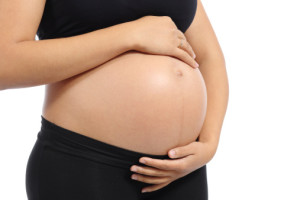Is Sleeping on Your Back During Pregnancy Linked to Stillbirth? Study Sheds Light
 A stillbirth is defined as a fetus that is delivered with no signs of life after the twentieth week of gestation. There are many potential causes of fetal death inside the womb, the risk of which is greater among women who smoke, suffer high blood pressure, have a history of pregnancy complications, are 40 or older, are obese, or have a multiple gestation.
A stillbirth is defined as a fetus that is delivered with no signs of life after the twentieth week of gestation. There are many potential causes of fetal death inside the womb, the risk of which is greater among women who smoke, suffer high blood pressure, have a history of pregnancy complications, are 40 or older, are obese, or have a multiple gestation.
An estimated one in 160 pregnancies ends in a stillbirth, according to the March of Dimes. Now emerging research suggests that women who sleep on their backs, especially during the last trimester of pregnancy, may be more likely to suffer a stillbirth if they already have other risk factors. Lead study author, Dr. Adrienne Gordon, stresses that sleep position alone is not to blame, and may only affect women who are already considered at high risk for fetal demise.
Study on fetal death risk factors
Dr. Gordon, who is a neonatologist in Australia, examined the records of 103 women who had a stillbirth after the 31st week of gestation, and another 192 women in their third trimester. Nearly 10 percent of participants who had suffered a stillbirth slept on their backs through the final month of their pregnancy.
Back sleeping can worsen sleep apnea, where breathing is constantly interrupted throughout the night, which may impair oxygen flow to an already vulnerable fetus. This may in turn contribute to impaired fetal growth, which has been deemed a significant risk factor for stillbirth by other researchers, including Dr. Halit Pinar, director of perinatal and pathology at Rhode Island’s Women and Infants Hospital.
Dr. Gordon and her colleagues say that there is not enough evidence to make sweeping recommendations regarding sleeping positions and risk of fetal death. Their research, which was published in Obstetrics & Gynecology this past January, may still prove helpful in preventing such a tragedy in women who have already been labeled “high risk” for stillbirth.
Statistically, placental abruption and other placental complications account for around 20 percent of stillbirths, while umbilical cord problems are to blame for another 15 percent. Thankfully, rates of stillbirth have been declining thanks to modern advancements in maternal care.
Stillbirth and medical malpractice litigation
In the context of medical malpractice, parents may have the right to pursue legal action against a health care provider whose negligent actions resulted in a stillbirth.
Examples of negligence that could give grounds for a stillbirth lawsuit include, but are not limited to:
- Failing to order a C-section in a timely manner
- Negligent prenatal care
- Failing to treat infection of the uterine lining
- Improper administration of Pitocin
- Failing to address umbilical cord prolapse or strangulation
- Ignoring concerns of slow or no fetal movements
- Failing to detect signs of fetal distress prior to delivery
An obstetrician, nurse or midwife may only be said to have acted in negligence if they failed to provide a “standard of care” that other health care providers with similar training would have offered under the same circumstances. Damages awarded in medical malpractice claims involving stillbirth may recover for emotional trauma, pain and suffering, associated medical bills, lost wages and other losses.
- WebMD, Sleeping on Back in Pregnancy and Stillbirth Risk http://www.webmd.com/baby/news/20150108/sleeping-on-back-in-pregnancy-tied-to-stillbirth-risk-in-study
- American Pregnancy.org,, Stillbirth: Trying To Understand http://americanpregnancy.org/pregnancy-loss/stillborn-trying-to-understand/
- March of Dimes, Stillbirth, http://www.marchofdimes.org/loss/stillbirth.aspx

 Resources
Resources
 Resources
Resources

